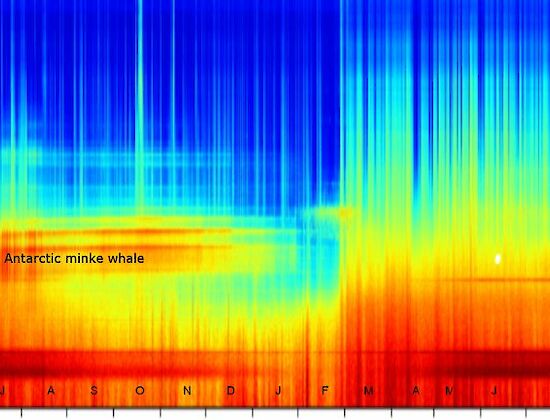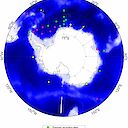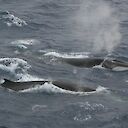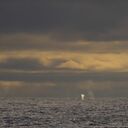Antarctic blue whales and fin whales: acoustic program


Acoustic trends in abundance, distribution, and seasonal presence of Antarctic blue whales and fin whales in the Southern Ocean
Background
Understanding baleen whale distribution and abundance in the Antarctic, particularly for Antarctic blue and fin whales is complicated by the pelagic distribution of both species, the difficulty of working in the Southern Ocean (SO) and the massive decline of both species due to commercial whaling. Sighting surveys are traditionally the means by which cetacean population abundance estimates are obtained. In the Southern Ocean however, these surveys are increasingly few and far between due to the particularly difficult working environment, the costs of surveys, and the inherent limitations of visual surveys (e.g., daylight, weather, sea ice, visual detection range, etc.). Given the distinctive and repetitive nature of certain call types produced by blue and fin whales as well as the long-range propagation of these sounds, passive acoustic monitoring offers a robust means to monitor these species over long time periods in remote areas, including the Southern Ocean.
Objectives
This initiative aims to implement a long term acoustic research program that will examine trends in Southern Ocean blue and fin whale population growth, distribution, and seasonal presence through the use of passive acoustic monitoring techniques. To initiate a long-term structured monitoring program and the gathering of baseline acoustic data, we propose the implementation of a passive acoustic monitoring network consisting of a ‘necklace’ of Passive Acoustic Recorders surrounding the Antarctic continent: the Southern Ocean Hydrophone Network (SOHN). One of the core objectives driving the SOHN project is to understand geographic and temporal variation in distribution patterns of animals through their calling behaviour.
Collaboration
This is a multinational project involving researchers from Australia, France, Germany, South Africa, USA and the UK. Further international collaboration and coordination will be essential for the SOHN project to succeed given the scale of effort that is envisioned both in terms of data collection and processing. The low density of shipping in the Southern Ocean combined with limited access to Antarctic-going vessels requires international collaboration among various national research programs and institutes in order to efficiently share logistical assets and minimize the costs of data acquisition. Antarctic scientists, managers, and operators interested in participating in the Acoustic Trends Project or SOHN project should contact the steering group.
Further information
- Sounds from blue and fin whales
- Devices for passive acoustic recording
- Selection of publications produced by the acoustic trends working group
- Datasheet for deployment and recovery of SOHN Passive Acoustic Recorders [Word]
- Contact the acoustic trends steering group
Help us with our research
The IWC-SORP Acoustic Trends Project requires international collaboration. Antarctic scientists, managers, and operators interested in participating in the Acoustic Trends Project or SOHN project should contact the steering group. The project is led by Flore Samaran and Brian Miller.





